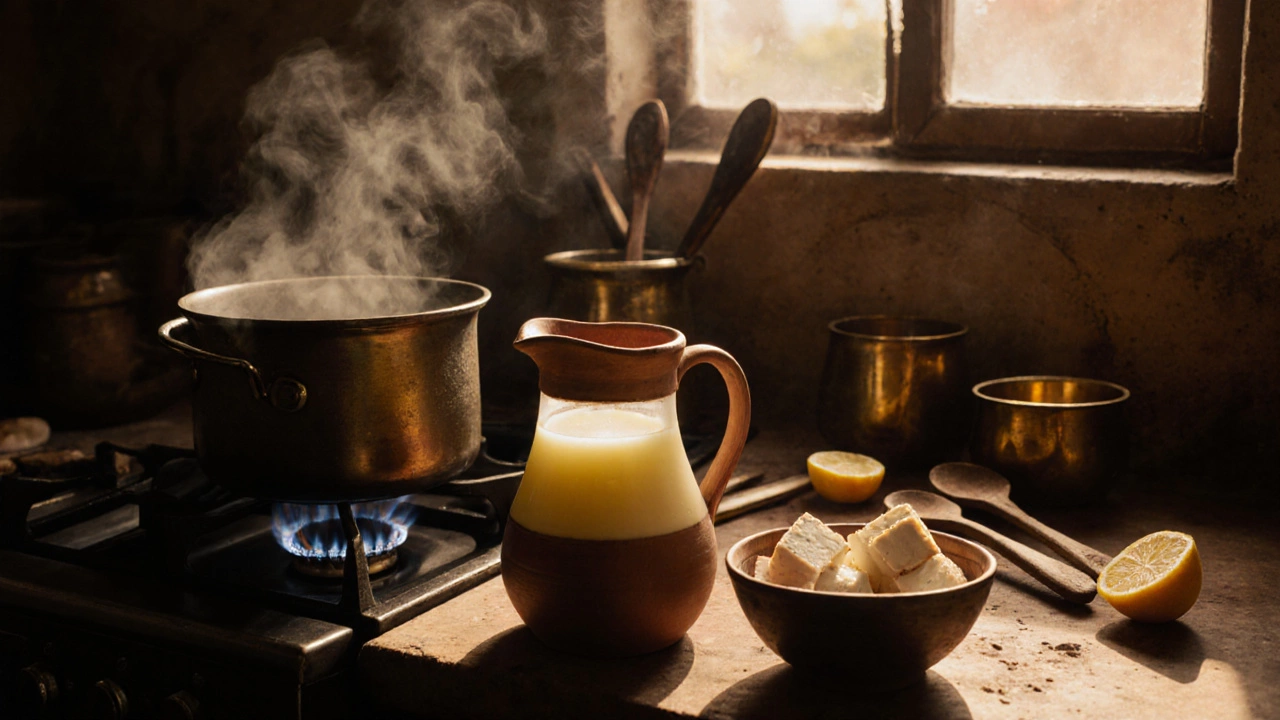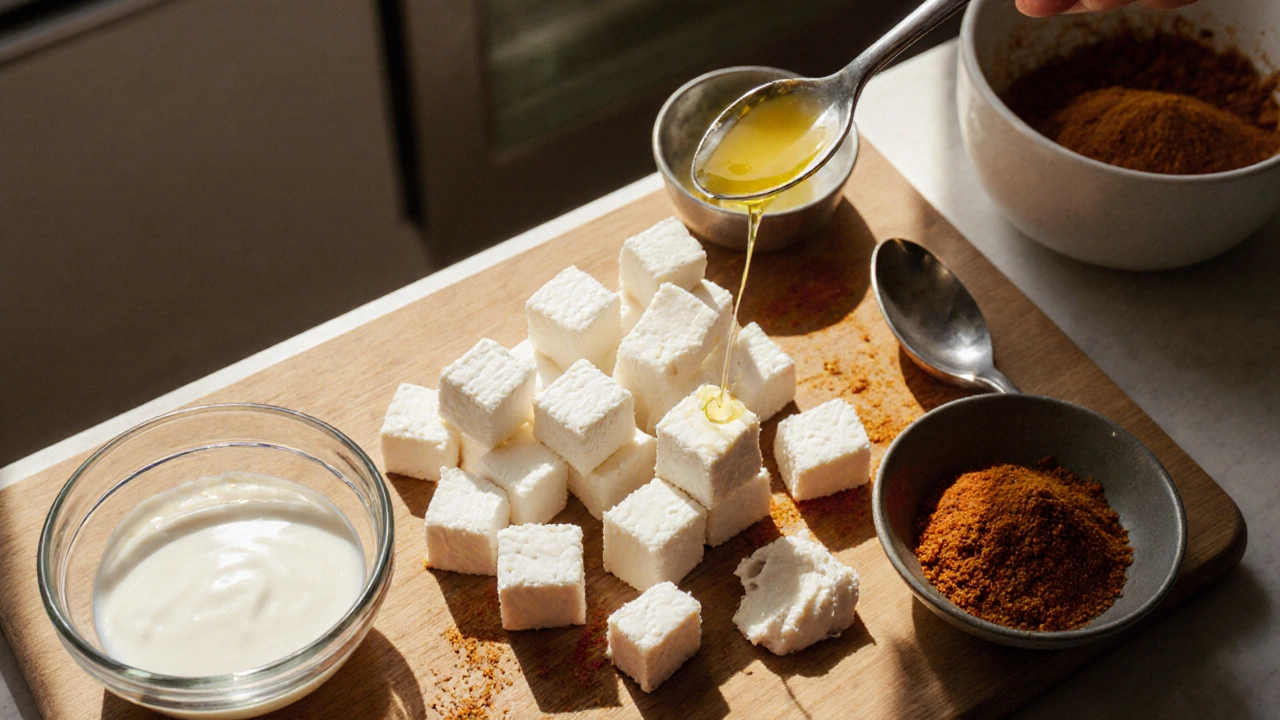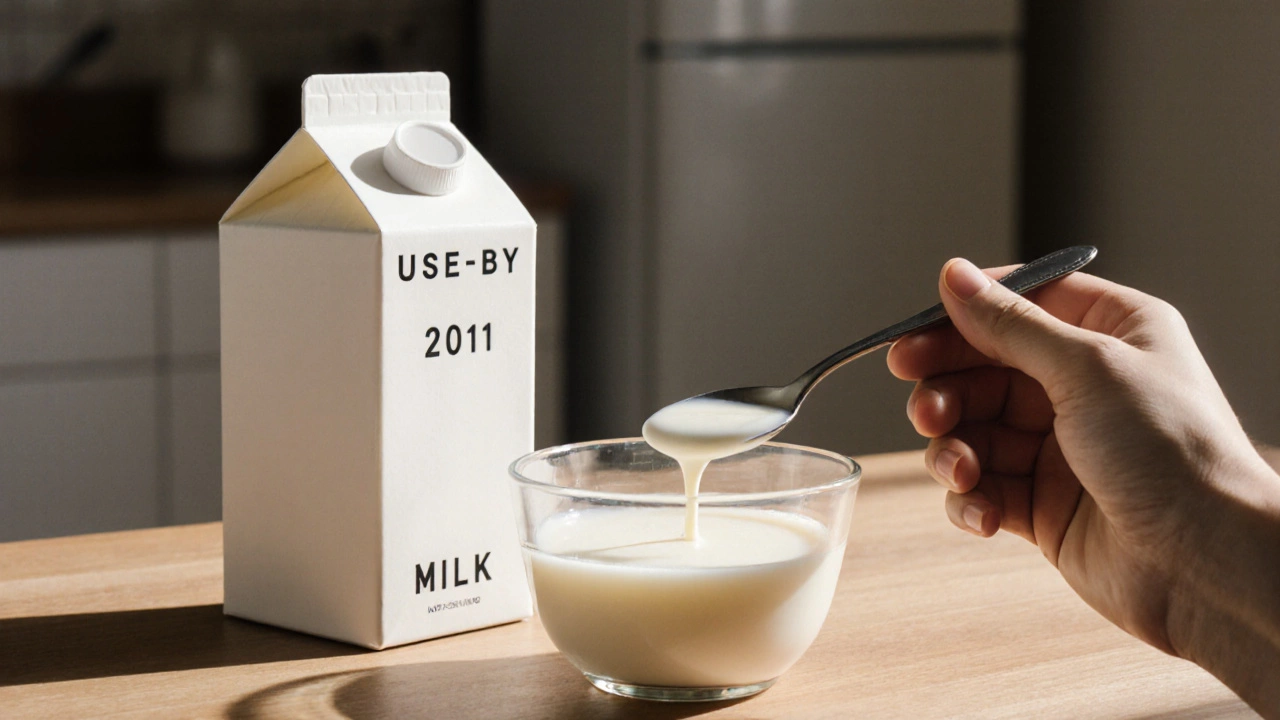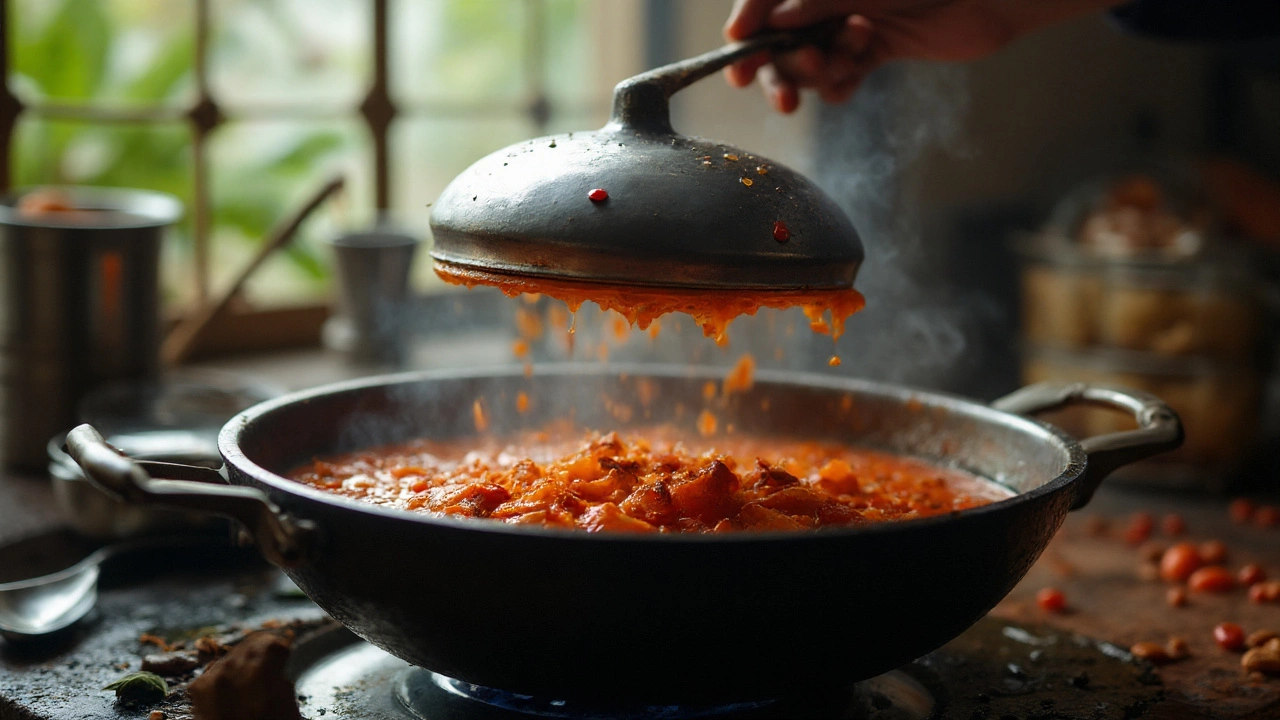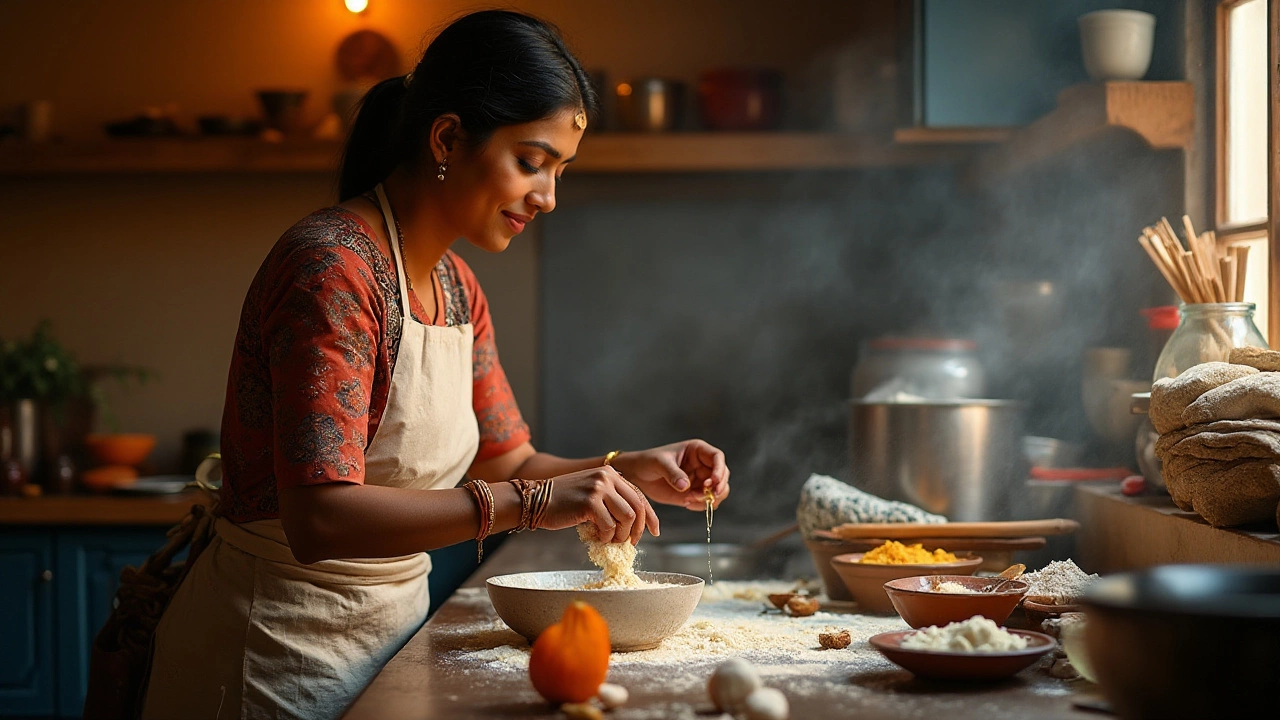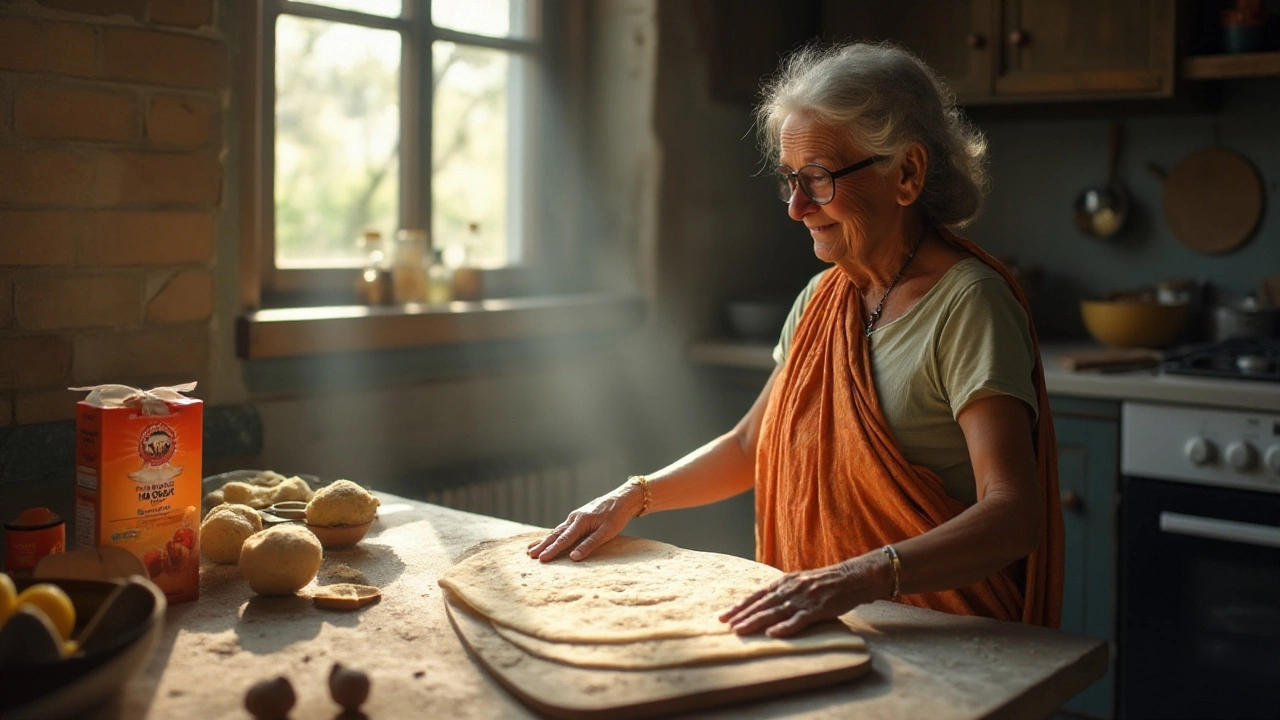Cooking Tips for Indian Home Cooks
Ever wonder why some chutneys turn out too runny or why rotis get hard after a few minutes? The answer is usually a tiny habit you can change in the kitchen. Below you’ll find practical, bite‑size tricks that work for everyday Indian cooking. No fancy gear, just simple steps you can start using right now.
Master the Basics: Chutney, Roti & Dal
Chutney is the perfect side, but the lid choice makes a big difference. Keep the lid on when you simmer a cooked or pressure‑cooked chutney – the steam stays inside and the sauce thickens without splatter. For raw or fresh chutneys, leave the lid off so the moisture evaporates quickly and you get the right consistency.
Soft roti is all about oil and timing. Adding a teaspoon of oil to the dough right before you roll it out helps the gluten relax, giving a pliable texture. If you prefer oil in the cooking pan, wait until the dough has rested for at least 20 minutes; this lets the moisture settle and prevents the roti from puffing up too fast.
Some cooks swear by a pinch of baking soda in roti dough. The truth? A tiny amount (about ¼ teaspoon per kilogram of flour) can make the roti a bit fluffier, but too much will give a metallic taste. Use it only when you want a softer bite, not for every batch.
Dal at night might sound odd, but it’s actually a smart move. Dal is high in protein and fiber, which helps keep you full without feeling heavy. A warm bowl of dal also supports digestion and can improve sleep quality because of its steady release of energy. Keep the seasoning simple – a tad of mustard seeds, curry leaves, and a splash of ghee works wonders.
Fix Common Flavors: Bitterness & Texture
Bitterness ruins a great dish, but you can neutralize it with a few kitchen tricks. Add a pinch of sugar or a splash of honey to balance the taste. A small amount of acid – lemon juice or tamarind – also cuts bitterness fast. If the dish is already salty, a handful of roasted peanuts or grated coconut can smooth out the harsh edge.
When a chutney is too thin, don’t panic. Reduce it over low heat with the lid off, stirring occasionally. Alternatively, toss in a spoonful of roasted gram flour; it thickens without altering flavor. For splatter control, use a splatter guard or a wide pan – the lid stays on, but the steam can escape through the edges.
Roti texture issues often come from over‑kneading or using too much flour. Aim for a dough that feels soft, not stiff. Let the dough rest, covered, for at least 15 minutes; this relaxes the gluten and makes rolling easier. If you forget the rest, a quick 5‑minute pause still helps.
These tips are quick fixes you can test tonight. Try one trick at a time, note the result, and keep the ones that work best for you. Cooking becomes more fun when you see improvement with just a small change. Happy cooking!
Can You Drink Whey After Making Paneer? Here’s What Really Happens
Yes, you can drink whey after making paneer-it's safe, nutritious, and full of protein. Learn how to use this kitchen byproduct in cooking, fermentation, and smoothies instead of throwing it away.
Do You Need to Marinate Paneer? Benefits, Tips & Best Practices
Discover if marinating paneer is essential, learn quick tips, flavor combos, and step-by-step methods to boost taste and texture for grills, tandoors, or sauces.
Can I Use Expired Milk to Make Yogurt? A Safety‑First Guide
Find out if expired milk can safely become yogurt, learn quick quality checks, step‑by‑step instructions, and tips to avoid spoilage.
Do You Cook Chutney With the Lid On or Off? Simple Rules for Perfect Thickness
Lid on or off for chutney? Clear rules for cooked, raw, and pressure-cooked chutneys. Stop splatter, nail thickness, and store safely-without guesswork.
How to Cancel Out Bitter Taste in Food: Simple Science & Practical Kitchen Tips
Tired of bitterness ruining your meals? Discover proven science-backed tricks to cancel bitter taste, plus handy kitchen hacks any home cook can use.
Why Eating Dal at Night is Beneficial
Delve into the reasons why having dal for dinner might be the comforting meal you didn't know you needed. Discover the nutritional benefits of this humble dish and learn simple recipes to make your nighttime meals both delicious and healthy. Dal, a staple in Indian homes, not only brings warm flavors but is also packed with nutrients that aid digestion and improve sleep. Explore how this legume can be a vital component of a well-balanced diet. Find out the various types of dal available and pick some handy tips for quick and easy recipes.
Does Adding Oil Make Roti Softer? Expert Tips for Perfect Roti
Achieving the perfect soft roti involves a blend of ingredients and techniques. A question often asked is whether the addition of oil contributes to a softer texture. This article delves into the science and practice of roti making, offering insights into the role of oil in achieving that tender, pliable consistency desired by many home cooks. Learn expert tips and tricks for making soft rotis that will delight your taste buds.
The Truth About Using Baking Soda in Roti Recipes
Roti is a staple in many households, cherished for its versatility and wholesome goodness. Many cooks wonder if adding baking soda can enhance the texture of this beloved bread. This article explores whether baking soda is beneficial in roti-making, debunking myths and offering practical advice. Learn about the science and traditions behind roti preparation to help you decide if this ingredient fits your culinary routine.
The Perfect Timing for Adding Oil to Roti Dough
Adding oil to roti dough at the right time can make a significant difference in texture and flavor. Whether you're aiming for soft, fluffy rotis or something with a bit more bite, understanding the role of oil is key. This article explores the best practices for incorporating oil into your roti dough, offering valuable tips and interesting facts to elevate your cooking skills. We'll delve into the science behind how oil affects dough elasticity and moisture retention to help achieve perfect results.
